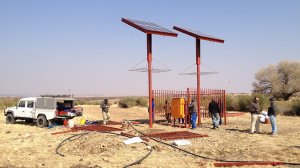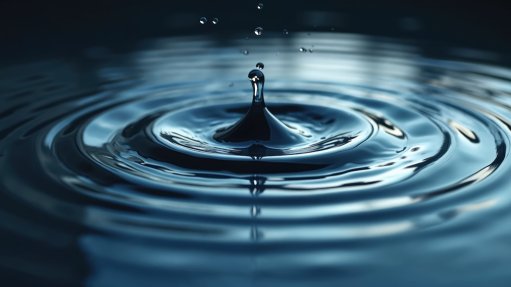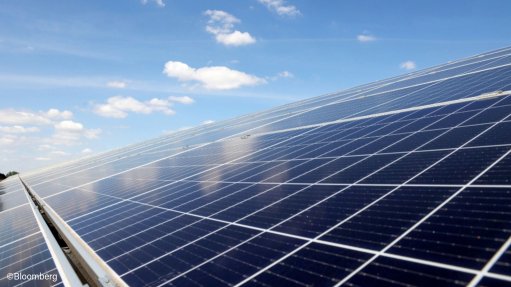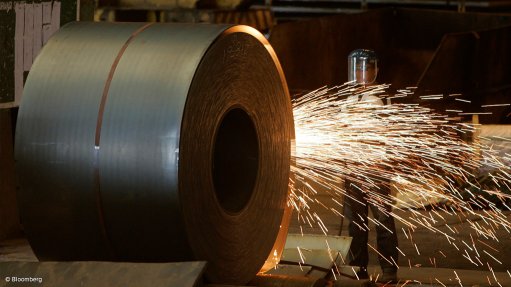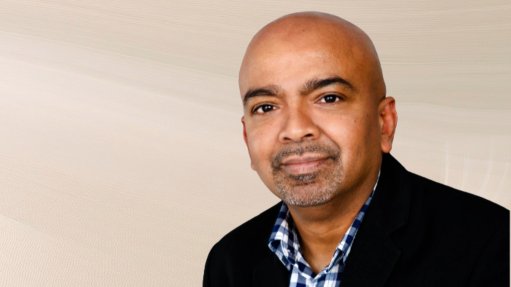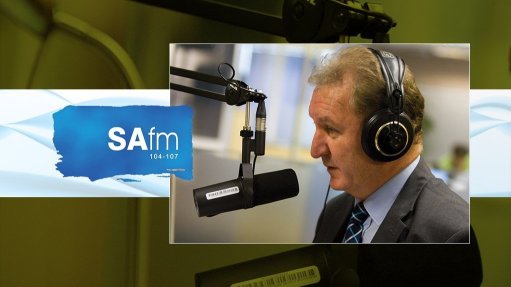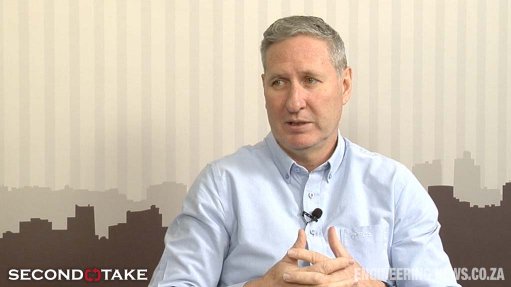New R150m facility to consolidate distribution to Africa

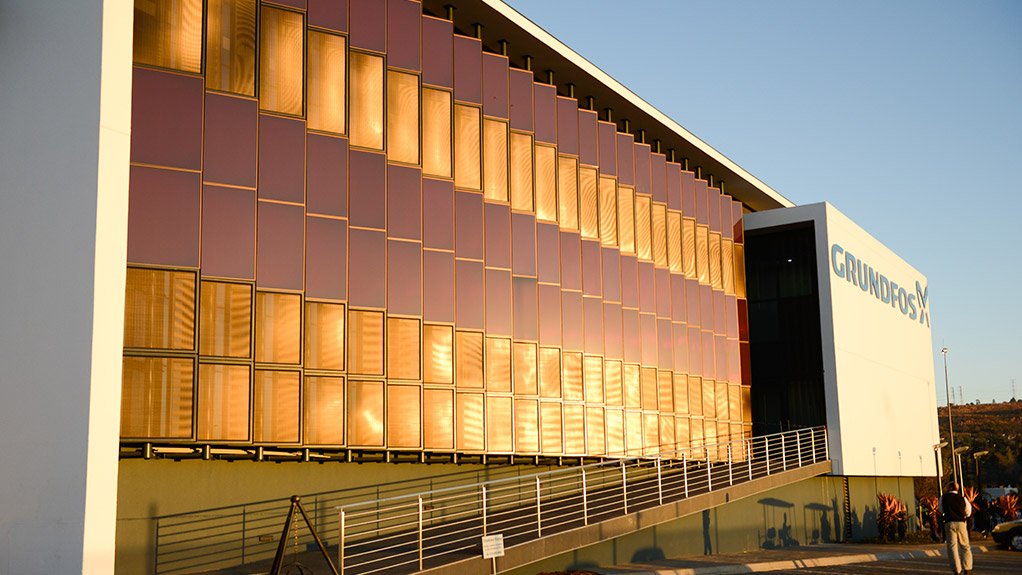


RENEWABLE ENERGYThe Meadowbrook building uses three wind turbines that generate electricity directly into the building’s grid to power the pumps and lighting when solar power is not available
CONSOLIDATION Grundfos South Africa can service the African continent from one location, reducing the time and cost of logistics from the factories to more than nine global locations
SOLAR-POWERED PUMPSSolar-powered borehole pumps are typically used in rural areas that have no access to electricity, or in agricultural applications, as an alternative to windmills
Pump manufacturing company Grundfos’ new 9 000 m2 facility, in Meadowbrook, which cost about R150-million to construct, was officially opened on August 14 and will serve as the company’s assembly and distribution centre for Africa.
“The company decided to consolidate its facilities, in Pretoria, and in Spartan and Bedfordview, both in Johannesburg, in a new facility on the East Rand of Johannesburg,” says Grundfos South Africa MD Jonathan Hamp-Adams, noting that Grundfos South Africa has subsidiaries in Nairobi, Kenya and in Accra, Ghana.
Through this consolidation, Grundfos South Africa can service the African continent from one location, reducing the time and cost of logistics from the factories to more than nine global locations.
The building makes use of energy effi- cient green technologies such as lighting, air-conditioning and rainwater harvesting systems. “Owing to the building being next to the R24/N12 highway split, the municipality required that a 250 000 ℓ rainwater attenuation tank be installed at the facility,” says Hamp-Adams.
Water is pumped from a borehole and the attenuation tank using a Grundfos SQFlex solar-powered pump. The water is treated using an in-house water treatment plant in the atrium and Grundfos’ chlorine digital dosing equipment.
These systems can intelligently measure the amount of water that passes through a pipe, using sensors and can also calculate and administer the correct amount of chlorine needed to clean the water, he explains.
The water is then pumped through the building using Grundfos’ CRFlex surface solar-powered pump, essentially providing the building with free potable water that can be used for all the building’s water requirements.
Further, the building uses three wind turbines that generate electricity directly into the building’s grid to power the pumps and lighting when solar power is not available.
“Globally, there is a big focus on energy saving and energy efficiency. Ten per cent of the world’s electricity is consumed by pumps and two-thirds of the world’s pumps could save up to 60% of the energy used with the correct technology in place,” explains Hamp-Adams, adding that, therefore, it makes sense to look into the possibility of energy savings in pumps and the motors that drive them.
He notes that there are three areas in a pump system where energy consumption can be reduced, the first being the type of motor selected to drive a pump. There is a drive among European Union member countries to make motors and other energy-consuming products, such as air- conditioning systems, compliant with the Energy-using Products (EuP) Directive. The purpose of the EuP Directive is to decrease the environmental impact of technologies, such as motors and pumps, to promote energy efficiency. The EuP Directive requires that motors are IE3 or premium-efficiency rated.
“Grundfos, in partnership with multi- national engineering and electronics conglomerate Siemens, has developed the SaVer motor, an IE4 or super-premium efficiency-rated motor for pumps,” says Hamp-Adams.
He adds that the motor was launched in March at the bathroom experience, building services, energy, air-conditioning technology and renewable-energies trade show ISH, in Frankfurt, Germany.
Hamp-Adams notes that energy savings are also possible at the wet end of a pump, which comprises casings, covers, stuffing boxes or seal chambers, impellers and associated fasteners and gaskets, by ensur- ing that a pump operates near its full capacity.
“A motor providing 100 W of electricity will use some of this energy to turn the shafts, but it will also lose some energy, owing to factors such as heat dissipation, or if the motor is incorrectly constructed. If this motor is 90% efficient, only 90 W of electricity will be transferred to the wet end of the pump, which will also use energy to turn the impeller that will, in turn, pressurise the pump and move liquid from the source to the desired end-location,” explains Hamp-Adams.
Owing to the design of the different components of the pump, energy is lost, thus reducing a pump’s efficiency and increasing its operating costs.
He notes that pump stations, at the world’s largest privately owned sugar cane farm in KwaZulu-Natal, owned by Charl Senekal, are using two 800 kW pumps to pump water from the Jozini dam for irrigation purposes. “Grundfos can provide a 600 kW pump capable of pumping the same volume of water as one of the 800 kW pumps currently in use on the farm.”
Hamp-Adams adds that this highlights the energy efficiency of Grundfos pumps and its ability to save on electricity costs.
Further, Grundfos recently completed an energy efficiency audit on the pumps used at a major plant owned by a South Africa-based brewery. The plant was able to save more than R900 000 a year by replacing the pumps with Grundfos solutions, says Hamp-Adams.
Variable-frequency drives (VFDs), which enable pumps to operate at varying speeds, depending on the demanded volumes of liquid that need to be pumped, can also increase energy efficiency, he notes. VFDs enable pumps to run at lower kilowatts when pumping below capacity, notes Hamp-Adams.
“In buildings with air-conditioning systems, standard pump designs will run at full capacity to pump the cool water through the ventilation system, even if there are only two people using the system. VFDs will allow for only the energy necessary to provide sufficient cooling for the two areas where the people are using the air-conditioning system,” he explains.
Grundfos also launched a new range of intelligent pump solutions, called iSolutions, at the ISH trade show. The iSolution includes standard and integrated pumps, controls, sensors, VFDs, connectivity and software.
Grundfos’ Dedicated Controls system is capable of controlling up to six pumps running in parallel. When used with a VFD, the system can increase energy efficiency. Users can also set up several warning signals, allowing for problems to be identified before pumps reach a critical state, which could lead to failure.
The Dedicated Controls system can wirelessly communicate pump performance and issues, such as maintenance requirements or pressure loss, using Apple- and Android-based devices that have installed the Grundfos GO application, which is available for free download on iTunes or Android Market. The application enables maintenance personnel to check pump performance using their smartphones or tablets in real time. This can help prevent unnecessary downtime of pumps, as challenges can be identified immediately and repairs scheduled accordingly, notes Hamp-Adams.
The Grundfos iSolution is an improvement on the Grundfos Remote Management (GRM) system, which also communicates pump performance, but over cellphone networks using SMSes or a satellite connection using email.
Hamp-Adams says the first time GRM was applied in South Africa was at the Moses Mabhida Stadium, in Durban, KwaZulu-Natal, during the 2010 FIFA World Cup. It is used all over the country in applications, such as water utility and building services, he adds.
Meanwhile, Grundfos was awarded a supply and commission contract last year for a fine-bubble aeration system at a wastewater treatment plant in Bellville, in the Western Cape. The company will supply and install a diffused aeration system, which is fitted to the bottom of a wastewater tank, as it is the most energy efficient method of water aeration, explains Hamp-Adams. The diffused aeration system blows fine bubbles into the water, forcing oxygen into it to improve the quality of the water and kill bacteria, he notes.
The company will also supply its S-range of submersible pumps, designed for wastewater treatment applications, to the project, which is scheduled for completion towards the end of 2014.
Last year, Grundfos launched the new S-tube impeller design for its SE and SL range of wastewater pumps. The impeller reduces the possibility of blockages as it can push large solids through a pump.
The company has also expanded the technology of its SQFlex solar-powered borehole pump, which previously could only pump a maximum flow of 90 m3/d or at a depth of 200 m, explains Hamp-Adams.
Grundfos had the African launch of its renewable solar inverter (RSI) in March, in Nairobi. The RSI can power Grundfos’ higher capacity SP submersible-pump range when used in conjunction with its SQFlex pump. The system, which was launched in South Africa in May, can pump a maximum flow of 150 m3/h or at a depth of 500 m, Hamp-Adams adds.
“Solar-powered borehole pumps are typically used in rural areas that have no access to electricity, or in agricultural applications as an alternative to windmills,” he says, adding that the company completed a project in June with water services provider Bloemwater, in a rural area just outside Kroonstad, in the Free State, which entailed the installation of a solar-powered borehole pump system.
“The residents of this village did not have access to running water for five years, as the existing water pump did not have any power to pump water. With the completion of this project, their taps have running water and they no longer have to draw dirty water from the local agriculture dam,” Hamp-Adams points out.
Comments
Press Office
Announcements
What's On
Subscribe to improve your user experience...
Option 1 (equivalent of R125 a month):
Receive a weekly copy of Creamer Media's Engineering News & Mining Weekly magazine
(print copy for those in South Africa and e-magazine for those outside of South Africa)
Receive daily email newsletters
Access to full search results
Access archive of magazine back copies
Access to Projects in Progress
Access to ONE Research Report of your choice in PDF format
Option 2 (equivalent of R375 a month):
All benefits from Option 1
PLUS
Access to Creamer Media's Research Channel Africa for ALL Research Reports, in PDF format, on various industrial and mining sectors
including Electricity; Water; Energy Transition; Hydrogen; Roads, Rail and Ports; Coal; Gold; Platinum; Battery Metals; etc.
Already a subscriber?
Forgotten your password?
Receive weekly copy of Creamer Media's Engineering News & Mining Weekly magazine (print copy for those in South Africa and e-magazine for those outside of South Africa)
➕
Recieve daily email newsletters
➕
Access to full search results
➕
Access archive of magazine back copies
➕
Access to Projects in Progress
➕
Access to ONE Research Report of your choice in PDF format
RESEARCH CHANNEL AFRICA
R4500 (equivalent of R375 a month)
SUBSCRIBEAll benefits from Option 1
➕
Access to Creamer Media's Research Channel Africa for ALL Research Reports on various industrial and mining sectors, in PDF format, including on:
Electricity
➕
Water
➕
Energy Transition
➕
Hydrogen
➕
Roads, Rail and Ports
➕
Coal
➕
Gold
➕
Platinum
➕
Battery Metals
➕
etc.
Receive all benefits from Option 1 or Option 2 delivered to numerous people at your company
➕
Multiple User names and Passwords for simultaneous log-ins
➕
Intranet integration access to all in your organisation




